Ayahuasca in any of its forms is not a recreational experience. Anyone seeking that or escapism should look elsewhere. It does however have the potential of producing profound benefits and healing. The information beneath is to serve as a guideline only, and people should proceed slowly and cautiously.
Partaking of ayahuasca in a safe space of your own, while not the same as venturing to Amazonia and drinking with a shaman there, has some advantages in that is obviously MUCH cheaper, avoids the burning of large amounts of fossil fuels required to get there and back, and avoids any dealings with an increasing number of charlatan shamans that have followed in the wake of an ayahuasca tourism boom.
Preparation
It is important to note that the ayahuasca vine is a source of monoamine oxidase inhibitors (MAOI’s) and combination of these with other drugs such as SSRI’s can be lethal. One must abstain from SSR’s for 8 weeks prior to ayahuasca, as these drugs have a long half life in the body. It is important to be drug free and sober when ingesting ayahuasca. The MAOI properties of the vine also make it incompatible with certain tyramine rich foods such as soy sauce, meats, cheeses, fermented foods and overripe fruits, and nuts. Caffeinated beverages and alcohol are also best avoided. Foods ingested will likely at worse result in a pounding headache, and as the MAO binding is short term, the diet restrictions are a lot less strict than with pharmaceutical MAOI’s which tend to be irreversible inhibitors producing long term effects. Other foods such as cocoa may potentiate the experience. A little food eaten later on in an experience can sometimes kick start the metabolism and bring on effects.
Consider abstaining from MAOI-offensive foods 24 hour before and after the ceremony. It is good to not have eaten for 4-6 hours so the stomach as empty, however extended fasts are not required or recommended. One should be well hydrated but it is good to stop drinking water a few hours before partaking of the brew. Take care when moving around; sudden movements can results in dizziness and a purge. Ayahuasca is a multifaceted medicine and the healings can work on a physical, mental, energetic and spiritual level, so it is important to consider the relationship you have with your body. One of the main mental challenges to healing with the brew is resistance from the ego. It is important to trust in and surrender to the experience, otherwise fear can block the healing potential of the brew and be a cause of much suffering. It is important to have some intentions for drinking the brew, and this will help direct the experience. A simple intention may be allowing the plants to show and teach you what they will. Some people find mantras, singing or throat singing useful when they want to navigate the experience. Also allow one’s focus to centre on breath, with breathing having a powerful influence on the experience. Some people invoke spirit guides, ancestors or the higher self for protection and guidance. Be prepared to confront feelings of pain, anger and grief, the medicine is very good at dredging up emotional baggage, and allow it to be released, often in the form of a purge. It can help if one opens a dialogue with the medicine and surrenders into the experience of emotion.
To a large extent, what you put into the experience you will get out of it. For people’s safety, and to maximise chances of benefit of an ayahuasca experience it is important to take the setting and physical, mental, emotional and spiritual factors into account. The well being and security of the ayahuasca drinker are of paramount importance, and it is important to prepare the space to suit individual comfort requirements.
Some people like to make spiritual preparations. The area you are planning to drink can be smudged to clear the space, and white sage or palo santo can be burnt, while stating intentions. One can acknowledge all spirits, seen and unseen, and banish negativity. Even if one is highly skeptical of such things, it may be interesting to try, and more may be revealed by your actions at a later time. Open yourself to love and gratitude. Is one really ready to expand consciousness and surrender to the medicine? Rituals can be beneficial even to people who see little point in them, with the structure and patterns of ritualistic actions feeding into the effects of the brew. Make sure the ceremonial space is clean and comfortable and everything is prepared and in place before drinking. Sometimes silence may be preferred, and ayahuasca icaros would be recommended. Wildlife jungle sound CD’s also work well. Access to nature would be beneficial.
Any feelings of insanity or unmanageability will be multiplied exponentially via the addition of DMT admixture plants. So when beginning to journey with ayahuasca, it is wise to brew the vine and admixture plants apart so dosages and ratios can be gradually adjusted to suit individual requirements…patience is a virtue here and will be rewarded. The vine is sometime referred to as “the force”, the DMT admixture plant as “the light”. Too much admixture plant too soon can result in terrible panic and feelings of impending doom. So people should get familiar with their MAOI plant of choice alone, before gradually increasing dosage of their DMT admixture plant of choice until they find a comfortable level. It isn’t all about the visions…many shamans see visions as a distraction from the healing and they tend to prefer vine heavy brews.
The brew has a powerful effect on the CNS and moving can be difficult and laborious, so it is wise to prepare anything needed before hand. Make sure to keep up a purge bucket within arm’s reach and take it with you to play it safe when you go the toilet.
It is best to remain seated or lying down, but slightly elevated. People have been known to fall asleep under the influence of the brew, and in the extremely unlikely event of vomiting while asleep this will prevent choking. Some water should be on hand, and there should be a candle in the bathroom so you can avoid the glare of artificial lights.
Turn off lights (candle light is soothing), turn off phone and computers, prepare any music, and ensure there will be no disturbances. The more one disconnects from external lights and noises, the more one can focus on the inner realm of teachings and visions.
It is good to have a sitter, in the form of an understanding partner, friend or family member who knows your plans for the eve. In the event of distress it is great to have someone to talk too. People are physically very safe on ayahuasca, but may be under the impression they are dying on occasion under the influence of the brew, and this will prevent any rash actions taking place such as contacting the emergency services, which would be bad news for everybody, including the entire ayahuasca using community. If you find yourself in deep, dark waters stay strong, it will pass, the experience is always in motion and flow.
This is a good forum specialising in ayahuasca and has lots of information on various aspects of the plants involved:
http://www.ayahuasca.com/
The MAOI plants
Two plants can be used for the beta-carboline alkaloids that act as the MAOI component of the brew. These are capable of inducing powerful effects and visionary experiences by themselves. The MAOI’s deactivate enzymes in the gut that allow DMT to be absorbed into the blood stream and take effect. The ayahuasca vine is used traditionally, but Syrian rue can be used in place of this, and can be highly effective if different in character to the vine.
Ayahuasca vine (Banisteriopsis caapi), also known as the vine of the soul, vine of the dead or yajé. The stem contains variable amounts of beta-carboline alkaloids, compromising 0.11-0.83% with harmine and tetrahydroharmine (THH) being the major components. This gives it a character distinct from Syrian rue, which contains higher quantities of harmine and much lower quantities of THH. The plant has a long history of use in Amazonia for spiritual and medicinal purposes. Unlike Syrian rue, which contains trace amounts of other, more toxic alkaloids (although a substantial amount would need to be consumed to pose a risk); the vine lacks these and can be taken at a range of dosages. In large quantities the vine is capable of inducing psychedelic effects on its own.
There are a number of varieties of vine available, including yellow, white, black, red, cielo and trueno to name a few, each with its own subtle differences that make it unique. Yellow vine tends to be recommended for beginners, not that it is less potent than the others, but it seems to be more “balanced” in its qualities than some of the other strains of vine. Dosages of 50-150g, or possibly more, are recommended. It usually takes a few attempts at drinking for people to “breakthrough” and find their sweet spot with the vine. So don’t be disheartened if little happens the first few times one drinks. It may be wise to start off with brewing an amount of vine in one go, and drink increasing quantities of it alone, until one finds their individual sweet spot with it, as individual sensitivities and potencies of vine vary widely. If you want to do it traditionally, you can obtain whole vine, speak intentions into it and hammer it. Otherwise, shredded vine is recommended. Due to the time investment of brewing, once people have tried and tested the brewing process, bulk cooks can be done which will give enough brew for a few sessions. Some people drink the vine and then 20 minutes later drink the light bearing plant, or the plants can be drunk together as they are traditionally if this is preferred. The vine requires much more time and a little more skill to prepare than Syrian rue.
Syrian rue (Peganum harmala) has a long history of use in the Middle East, in religious rituals and as a medicine, and it has recently grown popular in the West as an entheogen. The seeds are a potent source of beta-carbolines, including harmine and harmaline, and these can compromise up to 5.9% of the total weight of the seeds. Syrian rue has the advantage of being cheap, accessible, quick and straight forward to prepare and a reliable and potent source of MAOI’s. It does have its own character distinct from that of the ayahuasca vine, and in high doses produces visionary effects.
Seeds can be ground in a powder and ingested in gel caps if desired, this will avoid the intense bitter taste, but some people find ingesting solid seed matter harder on the stomach. Individual sensitivities vary, but 3.5g of Syrian rue seed seems like a reliable dose to produce full MAO inhibition in the majority of people. There is no need to take more than this as side effects such as nausea and dizziness will increase. It may be worth taking Syrian rue (and caapi) alone first so one is familiar with their character prior to the addition of DMT admixture plants. In a tea, Syrian rue seeds require 3 half hour washes in acidified water if ground, or 3 one hour washes if whole (will make the mixture easier to filter). In the following recipes the rue it can be brewed together with the DMT admixture plants. There are also techniques for producing a full spectrum alkaloid extract from both Syrian rue and caapi which can also be used.
Some may find Syrian rue easier to work with, and it brings its own unique properties to the experience. This is not to bash the vine, which has its own distinct properties, but much larger quantities of this are needed in brewing, and it requires a much longer brewing time.
Chacruna (Psychotria viridis) is the most traditional of all DMT admixture plants. However it is one of the most unreliable potency wise, so purchasing it for brewing is always a gamble, with DMT content varying widely. Unlike the other DMT admixture plants however, chacruna is a very pure DMT source. Some report Hawaiian chacruna as being more potent. The alkaloid content unique to each DMT admixture plant give them their own particular characters. Chacruna is traditionally brewed together with the vine, generally in a 1:1 ratio.
Chaliponga (Diplopterys cabrerana) also known as chagropanga and oco-yajé is another traditional admixture plant used in the Western Amazon. Some shamans see it as a light bearing plant to graduate on to. It is a much more potent plant than chacruna, although like the latter potency varies widely, with up 0.17-1.75% DMT, with trace amounts of a number of other alkaloids. It would be wise to start off with low doses of 2g and work upwards to find a comfortable level. Chaliponga can be brewed with the caapi, although brewed separately makes it easier to adjust vine/leaf ratios to suit personal tastes. It only requires 3 half hour washes in acidified water to pull out the bulk of the DMT.
Mimosa (Mimosa hostilis) has traditional use as an entheogen, but is un-traditionally used as an ayahuasca admixture plant. The root bark is used, and it is a potent source of DMT at up to 1% by weight, sometimes more, and other mysterious ‘jungle alkaloids’ that are less well known. Mimosa must be brewed separately from the vine, as the tannins are hard on the stomach, and may cause early purging, so they shouldn’t be ingested.
Mimosa should be brewed just like the vine, then the combined filtered washes left to decant for 24 hours, and the sediment will settle. Some people have trouble stomaching mimosa, and it is important to avoid drinking the sediment, and mimosa can occasionally result in a hangover, unlike the other light bearing plants. Be very careful with dosage when ingesting this plant, very little goes a long way, and it can be potent from 0.5g upwards. If too much is ingested it can be very unforgiving and overwhelming, and it is worth proceeding with caution when first dosing.
Acacia confusa is a recent addition to the list of DMT admixture plants. It is native to Taiwan and has a variety of uses, including in traditional medicine. There are some reports of its entheogenic use by Taiwanese inhabitants but any such use in this context is kept highly secret. It is a very potent DMT source, up to 1.15% in the root bark, as well as up to 1.43% NMT. Like DMT, NMT is an endogenous brain compound that is made active in the presence of MAOI’s and it gives the experience a distinct flavour and feel, smoothing it and prolonging the afterglow. Pure NMT appears to act more as a spatial and sensory psychedelic than a visionary one like DMT. For the few that have tried it, it tends not to induce visions but rather feelings, including a sense of tranquility.
For the DMT or light bearing plants, my preferences from personal experience would be chaliponga and Acacia confusa root bark.
General brewing guidelines
This is a guide, not a precise recipe as people’s sensitivity to the brew and the potency of the plants varies widely, but roughly followed this should produce a brew which can be drank in different volumes to achieve a desired level of effect, so people can test the water. In some ways it is better to drink too little than too much, you can always drink a little more when you know how you respond to a certain dosage level.
Always cook with stainless steel. Distilled, reverse osmosis, filtered or spring water are preferable to tap water and the water is acidified with distilled white vinegar, one tablespoon per litre. This assists in drawing the alkaloids out of the plants when simmering. The vinegar is a better choice than lemon juice which tastes particularly foul when concentrated. Bring the water to a boil and then keep the water gently simmering. Be mindful of the brewing process and remember the wider the pan the faster the brew will reduce down. Keep water topped up to keep plant materials covered, and when nearing the end of a cook, let the water reduce. All this applies to any plants being prepared for ingestion.
Caapi vine brewing guidelines
Do three boils of three hours each. After each cook, pour the brewed water into a separate pot. This pot is covered with a cotton shirt or sheet, and this filters the plant materials. Scrape these off into the original pot and repeat the process until the three cooks are done. A 9 hour cook is enough to extract the alkaloids from the plant, any less time will reduce potency, and after 12 hours the brew will become more tannic and harder on the stomach without much increase in potency.
All three filtered washed are combined and reduced. This stage requires constant attention. Reduce it down to a few ounces of liquid. It should be highly concentrated. It will taste foul, but this is an unavoidable trial you need to pass, so the less to drink the better. Orange slices can be sucked on immediately after drinking to help take away the flavour afterwards of desired. The more concentrated the brew is, the less likely it is to ferment or grow mould. For long term storage keep in sterilised jars. It can be refrigerated for several months or frozen indefinitely.
Chaliponga & rue recipe
I would recommend leaving the Syrian rue seeds whole, the water will still pull most of the alkaloids out and it will make the mixture much easier to filter. Rue seeds are very cheap so it’s easy to add an extra pinch of seeds to make up for this. Make sure if using chaliponga that the leaves are well ground before use as they have thick resin rich leaves that will otherwise block release of DMT and other alkaloids. 12 grams of Syrian rue and 30 grams of chaliponga are used.
The mixture of plants are added to a litre of water with a tablespoon of distilled white vinegar. Bring to the boil and lightly simmer the mixture, if using whole rue seeds, brew for 30 minutes and then add the ground chaliponga leaves and brew for 30 minutes more. If using ground seeds, brew the mixture for 30 minutes. Then pour off the mixture through a cotton cloth to filter out the plant mixture. Scrape this off and repeat this step twice with fresh water with a tablespoon of vinegar. The three washes can then be combined and the plant matter discarded. This can then be simmered down to 400-500ml of brew (don’t worry boiling won’t damage the alkaloids).
You can then drink your desired amount over the course of a night to find your feet, and this should be enough for a few sessions. The brew can be refrigerated (if it has been a few weeks, important to simmer it prior to use to evaporate any alcohol that may have formed through fermentation), or frozen for long term storage.
Acacia & rue recipe
Here is a recipe for using Acacia confusa root bark. 13g of finely ground A. confusa root bark and 6g of Syrian rue seed are combined and are simmered in a litre and a half of water with a tablespoon of white distilled vinegar for half an hour, the mixture filtered with cotton cloth, and then the process repeated twice more. These are minimum time guidelines, and it will in no way hurt to allow longer for each simmering. The combined liquid should be simmered down to around 250ml (a measuring jug is an ally here).
As an option, lemon balm can be added to the water for 15 minutes when simmering down to improve the flavour, and this and plants like chamomile may add their own subtle character to the experience. This can also apply to brews using other mixtures of plants. Regarding taste it is preferable to drink it warm.
25/30ml of this should be enough for threshold effects, for increased awareness and as a meditation ally. 100ml should be enough for a full journey, 125ml things kick up a notch, and 150ml could be entering deep water.
Alternatively, people could take Syrian rue seeds in the form of ground seeds, as a tea or an extract, and then drink powdered A. confusa root bark, blended with fruit juice. 5g appears to be a good starting dose for sub psychedelic effects, and then a little later more can be consumed if desired. If ingesting the MAOI and the DMT brew separately, it is good to leave around half an hour or 40 minutes, or until you start to feel effects from the MAOI. It is important not to leave the top up dose for too long a time, certainly not more than two hours after taking the MAOI, as the window of enzyme inhibition doesn’t remain open for long.
As I’ve said this is not an exact recipe, more of a rough guide for anybody curious, people’s individual sensitivities vary widely, and potency of the plants is also subject to variation. People should experiment and see what works best for them.
Homebrew Ayahuasca Guide,
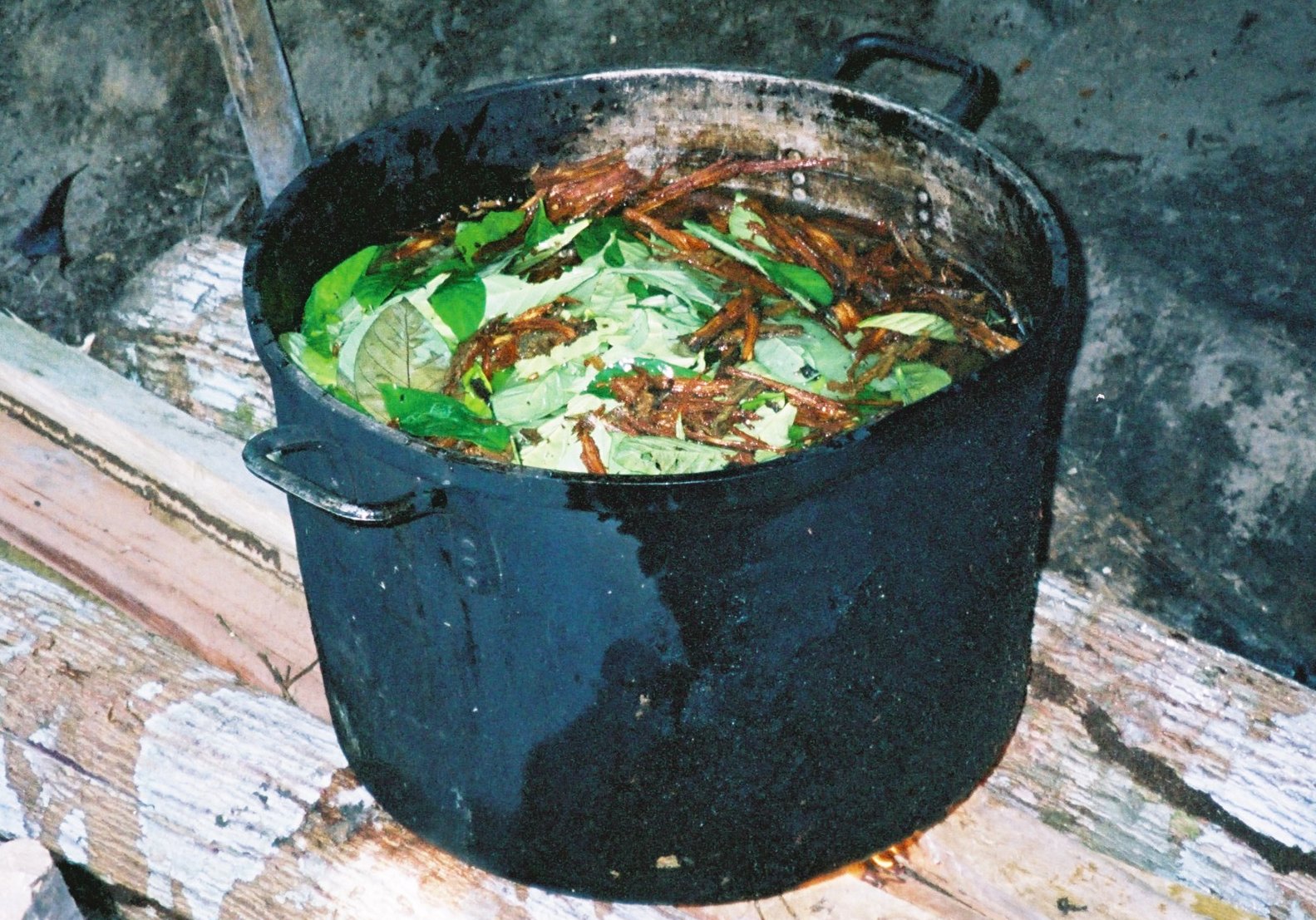
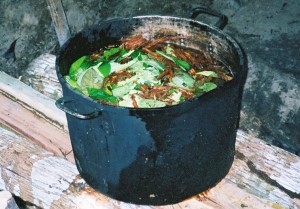
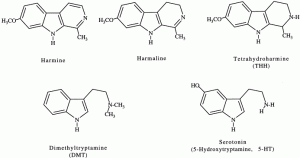
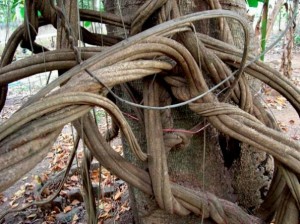
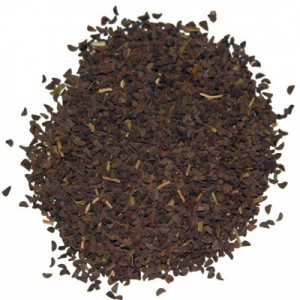
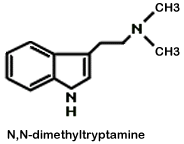

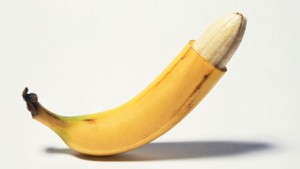
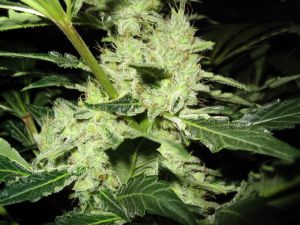
cmc12595
18 Jan 2016Hello. I’m preparing my very first brew. I would be thrilled to discuss my intentions or just further into anything as I’m sure I will have more questions. The Acacia/Rue brew, after letting simmer for the half hour, you filter. Do you just put the ingredients back in a litre of water AND the tablespoon of vinegar? I’m mainly wondering about the vinegar. do I add a tablespoon after every time I filter?
Samwise
18 Jan 2016Hi there, yes you do each time. The water wants to be slightly acidic from the vinegar to increase solubility of the alkaloids. By dong three individual washes on the same material you are maximising your chances of pulling all the actives from it. A teaspoon of apple cider vinegar is all that is needed. Your intention is entirely up to you. I don’t really go in with intentions as I haven’t had much luck with them…I go in with the intention that the plants show me what they wish. But that’s just me.